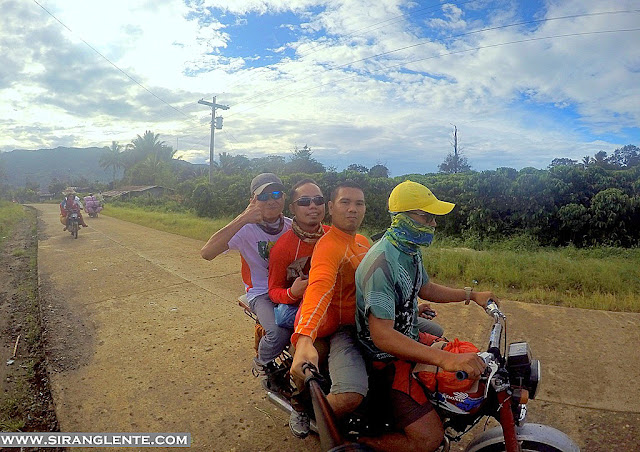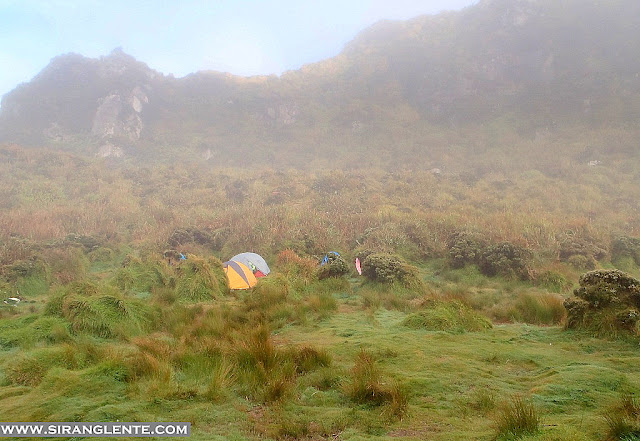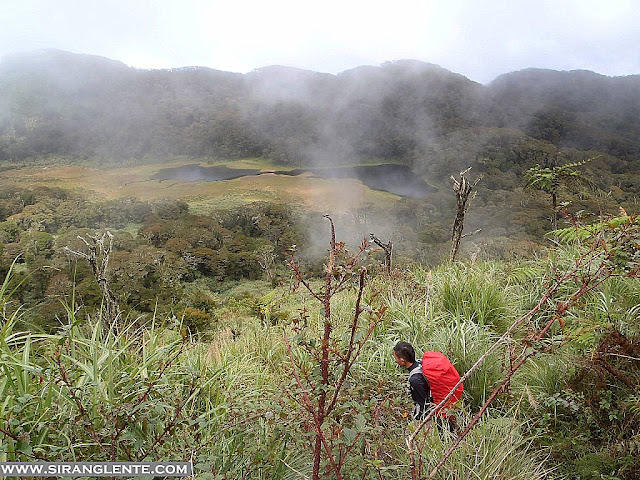 |
| Photo taken at the boulders of Mt. Apo. |
Introduction:
Mt. Apo is a dormant stratovolcano in Davao Region, Mindanao, and it is dubbed the "Bubong ng Pilipinas" because it is the highest and the father of all the mountains in the Philippines. Its circumference stretches to two provinces in the southern Mindanao region, the provinces of North Cotabato and Davao del Sur. Though this mountain is considered active, trekking on its terrain is safe and can provide a package of remarkable experiences and photos to be shared.
Important Details About Mt. Apo:
- Location: Davao del Sur, North Cotabato
- Coordinates: 7°0′30″N, 125°16′33″E
- Height/Elevation: 2,954 MASL
- Hiking Difficulty: 7/9
- Trails Class: 3
Day 0 - Hike Itinerary
Te Bing and I had a flight earlier than the rest of the group, so we had time to visit her cousins in Mindanao prior to hiking Mt. Apo. Our itinerary was from Digos to South Cotabato and back to Digos City in one day. It was my first time going into backpacking or commuting in the region, so I was tired yet happy. We stayed at her cousins in Digos, where we met the rest upon their arrival the next day.

Day 1 - Hike Itinerary
- Mt. Apo Preparation
Before heading to the jump-off, we went to a wet market and bought supplies such as meat, vegetables, etc. Then, we pre-cooked them at a residence in front of a Memorial Clinic. When everything was settled, we rode on a motorcycle to the water tank - the jump-off. Riding on that motorcycle and passing on the muddy road was insanely remarkable. Kudos to the drivers!
- Start of the Trek
It was 9 in the morning. Our journey started at the water reservoir, the jump-off. It was an uphill trek, passing by the community and their vegetable plantation. Two hours from the jump-off, on a continued ascent, we reached the trail which is the start of the actual ascent to Tinikaran, the first camp. On this part, the uphill trail continues enclosed in a healthy forest, with mosses and ferns hanging on trees, with the visibility of lichens on the boulders and trees, and with the birds singing their lullabies - it was really a trek through a jungle trail.


We reached the Tinikaran Campsite at 2:30 PM. It is also known as Camp 1 and is part of Sibulan, Sta. Cruz, Davao del Sur - 5.45 kilometres away from the summit. The campsite isn't wide but can accommodate a few tents. The area is surrounded by countless flora, which preserves the tranquillity. This spot is also prominent for having a wealthy bio-diversity that only exists in rainforests. Monkeys are playing while the birds are singing lullabies. Our first day ended with darkness and rain showers with a very cold wind. On the other hand, the sound of the insects and wind made us fall asleep.

Day 2 - Hike Itinerary
- At Tinikaran Campsite
It was a very long night at the campsite of Mt. Apo. The second day started. As we turned on the lights and prepared for our breakfast, the monkeys started their new day stealing our stuff. Waited for the golden sunrise to contrast the cold breeze. Had our breakfast and break camp. Started our ascend at around 9 AM. From Tinikaran Campsite, the healthy ecosystem and great wildlife on the terrains are noticeable. On this part, the trail isn't just about an uphill ascend; it also includes hopping on and off the boulders and bending your body back and forth because of the trees blocking the trail.


- The Sulfur Vents
- We reached this area at around 11:30 AM. Mount Apo is a dormant volcano and the vents on the ground with steam and sulfur coming out gives another challenge. The steam smells like mud - a powerful foul smell of mud! Despite that, the area can still be a perfect backdrop for photo ops because of the yellowish colour covering the rocks and boulders. This adds to the unique experience.




It was a long expedition of trekking and hopping on and off the rocks and boulders after the sulfur vents area. Though the boulder trail is interesting because of the gigantic walls made of artistic rocks and a pile of boulders, I can personally compare it to the limestone walls in Greece (photo above). Also, the cute and colorful wild berries by the trails are another interesting discovery. Then, the next part was an assault on cogon grassland, which served as our campsite.


- Cogon Grassland - The Campsite
- We finally reached Mt. Apo campsite around 4:30 PM. The weather wasn't good, the wind was strong and very cold. Plus, the strong rain showers added a bit of a challenge. Not exaggerating but when it strikes my skin, it feels like blades slashing. Anyway, we set up our camp and prepared our dinner while there was sunlight. Had our dinner and socials inside the tent. And we call it a day!
 |
| Photo: The Crogon Grassland. |
Day 3 - Hike Itinerary
- Trek to the Summit of Mt. Apo
We were unable to take a complete eight-hour sleep because of the cold weather and the noise created by the strong wind. It was still early, but everyone was up, so we started a conversation while the campsite was surrounded by darkness. Waited for the sunrise. Prepared and had our breakfast. And ascent to the summit.
 |
| Photo: Our group on the Summit of Mt. Apo. |
From cogon grassland, the trails are uphill and the terrain is rich with dwarf trees, wild berries, lichens on the rocks and some other plants - proof that this mountain still has a virgin and wealthy ecosystem. Also, this mountain has several peaks; therefore, the trails are a combination of uphill and downhill. We got a glimpse of the golden sunrise, but it wasn't enough to see the beauty that surrounded this giant. Descent to Cogon grassland and explored the wide area.
 |
| Photo: A stunning view of Lake Venado. |

- Lunch at Lake Venado
- Passing by the Amalciga Century Tree
Click Helpful Links Below:
